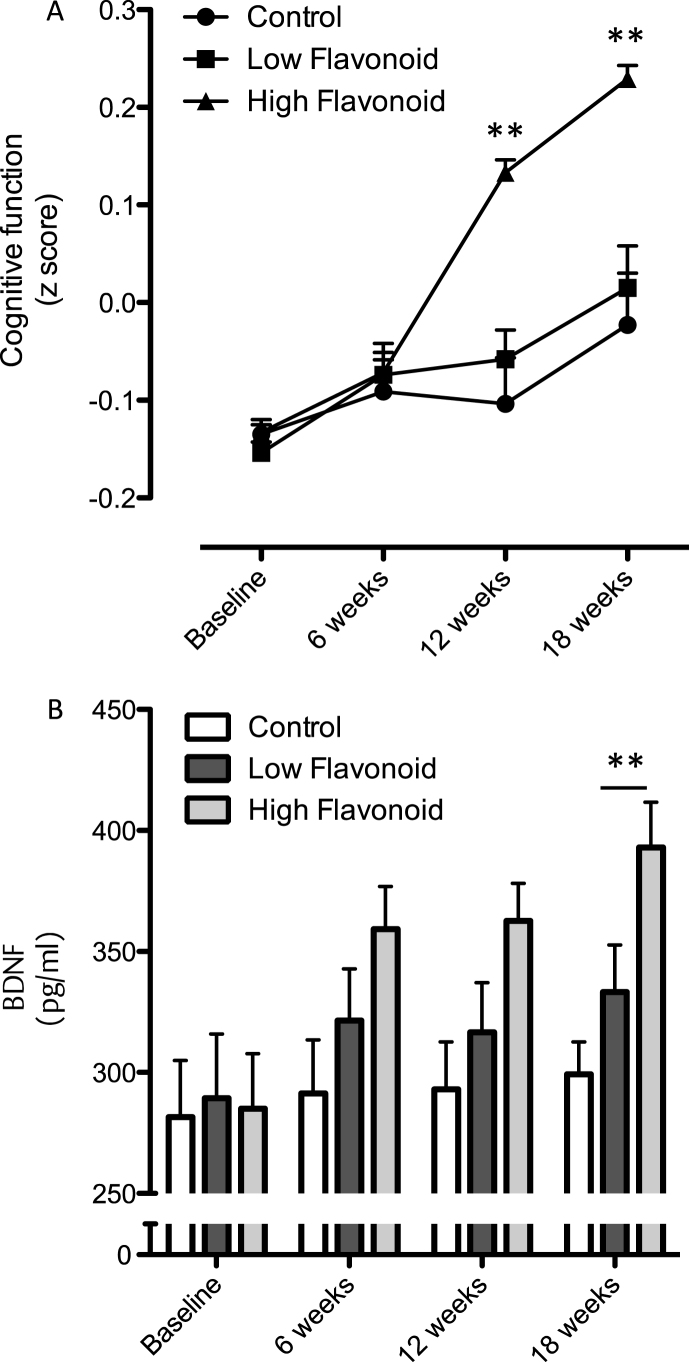Fig.5.
Influence of fruit and vegetable intake on cognition and BDNF. (A) Time-course of changes in cognitive function following consumption of high flavonoid F&Vs; low flavonoid F&Vs; and after following habitual diet (Control). Data were analyzed using two-way repeated measures ANOVA with time and treatment as the two factors (significant effect of time (p = 0.003), treatment (p = 0.069) and an interaction (p = 0.033) between dietary intake and cognitive performance. Post hoc analysis, (Bonferroni) indicated significantly greater cognitive performance at both 8 (***p < 0.001) and 12 weeks (**p < 0.01), relative to both habitual diet (control) and LF F&V intake. (B) Impact of fruit and vegetable intake on serum BDNF levels. A two way ANOVA with repeated measures indicated significant time (p = 0.008), treatment (P < 0.005) and an interaction (p = 0.026) between serum BDNF and dietary intake across the 12 weeks. Post hoc analysis indicated a significantly higher serum BDNF level at 12 weeks in the HF F&V group, relative to the habitual diet (control) group (**p < 0.001). Details of the high and low classification of F&V are outlined in the Materials and Methods section. All data are plotted as mean values±SEM (n = 112).

